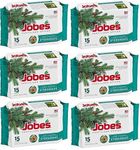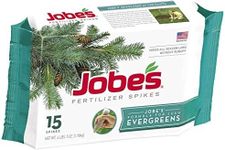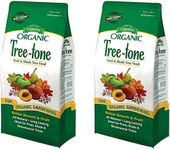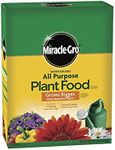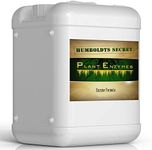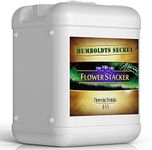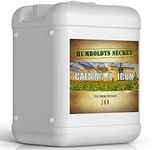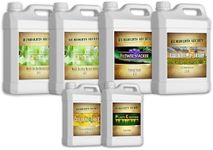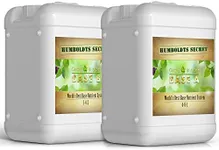Buying Guide for the Best Fertilizer For Pine Trees
Choosing the right fertilizer for your pine trees is essential to ensure their healthy growth and development. Pine trees have specific nutrient requirements, and understanding these needs will help you select the best fertilizer. When picking a fertilizer, consider the type of nutrients it provides, the form of the fertilizer, and the application method. By paying attention to these factors, you can ensure that your pine trees receive the proper nourishment they need to thrive.Nutrient Ratio (N-P-K)The nutrient ratio, often represented as N-P-K, stands for Nitrogen (N), Phosphorus (P), and Potassium (K). These are the primary nutrients that plants need. Nitrogen promotes foliage growth, phosphorus supports root development, and potassium enhances overall health and disease resistance. For pine trees, a balanced ratio like 10-10-10 or one slightly higher in nitrogen, such as 12-6-6, is often recommended. If your pine trees are young or newly planted, a higher phosphorus content can help establish strong roots. For mature trees, a balanced or slightly nitrogen-rich formula will support healthy foliage.
Form of FertilizerFertilizers come in various forms, including granular, liquid, and slow-release. Granular fertilizers are easy to apply and can be spread around the base of the tree. Liquid fertilizers are quickly absorbed and can be mixed with water for foliar feeding. Slow-release fertilizers provide a steady supply of nutrients over time, reducing the need for frequent applications. For pine trees, slow-release fertilizers are often preferred as they provide consistent nourishment and reduce the risk of over-fertilization. Choose the form that best fits your maintenance routine and the specific needs of your trees.
Application MethodThe method of applying fertilizer can impact its effectiveness. Common methods include broadcasting, deep root feeding, and foliar feeding. Broadcasting involves spreading the fertilizer evenly around the tree's drip line. Deep root feeding delivers nutrients directly to the root zone using a specialized tool. Foliar feeding involves spraying a liquid fertilizer directly onto the leaves. For pine trees, broadcasting and deep root feeding are generally more effective as they ensure nutrients reach the root system. Consider the size and age of your trees when choosing an application method. Larger, established trees may benefit more from deep root feeding, while younger trees can thrive with broadcasting.
Soil pH CompatibilitySoil pH affects nutrient availability and uptake by plants. Pine trees typically prefer slightly acidic soil with a pH range of 5.5 to 6.5. Before selecting a fertilizer, it's important to test your soil's pH. If the pH is outside the optimal range, you may need to adjust it using soil amendments. Some fertilizers are formulated to help maintain or adjust soil pH. Choose a fertilizer that is compatible with your soil's pH to ensure your pine trees can absorb the nutrients effectively. If your soil is too alkaline, consider using a fertilizer that includes sulfur to help lower the pH.
MicronutrientsIn addition to the primary nutrients (N-P-K), pine trees also require micronutrients such as iron, manganese, and zinc for optimal growth. These micronutrients play crucial roles in various physiological processes. A deficiency in any of these can lead to poor health and growth. When selecting a fertilizer, look for one that includes a range of micronutrients. This is especially important if your soil is known to be deficient in certain elements. Ensuring a well-rounded nutrient profile will help your pine trees stay healthy and resilient.



